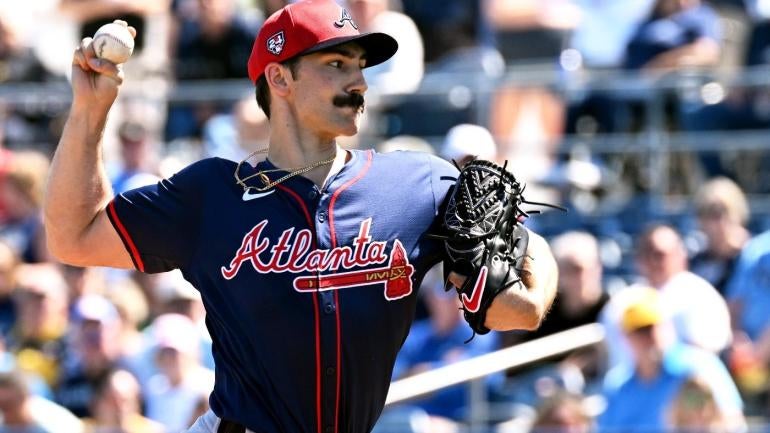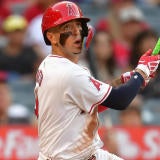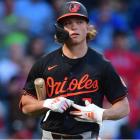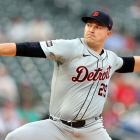
Want to know which pitchers might break out? The ones who added a new weapon to their arsenals are often a good bet. Here's who is doing some tweaking.
March 15, 2024
Alright, let's talk about Spencer Strider's curveball. If you follow @PitchingNinja on Twitter, you've surely seen plenty of Strider's new curveball, and I'll admit, it's impressive how quickly he seems to have developed a feel for this new breaking pitch, routinely throwing it in two-strike counts for backwards Ks. And it's certainly fun to imagine how this pitch might make Strider even better … but I'm not actually sure how excited we should be about this pitch. That's not to say it doesn't look like a good pitch or can't be a weapon for him, because it does look good, and can be a weapon, clearly. But Strider is already operating in rarified air, sporting the sixth-best strikeout rate in major-league history for a pitcher with at least 300 innings, behind five elite high-leverage relievers. Can he get better? Sure! In fact, I expect better from Strider than last year's inflated ERA. But I expected that if he was just the same guy as before. I'm just not sure our expectations should be much higher now that he has a curveball. He's the No. 1 pitcher already for a reason.
Paul Sewald has a changeup now. Sewald has been a two-pitch pitcher for pretty much his entire career in the majors, throwing a high of 65 changeups (out of over 1,000 total pitches) in 2018 and just 22 in five seasons since. And, as Sewald himself put it, "I would say, as humbly as I can – I don't need a third pitch." But it's an interesting wrinkle for a guy who is already one of the best relievers in baseball, and unlike Strider, there's plenty of room for Sewald to join the elite tier of closers if this pitch fuels a step forward.
Jose Berrios' new cutter continues to look solid. Berrios has thrown 8.1 innings with just one run allowed this spring, and he's incorporating his new cutter about 10% of the time so far. It hasn't been a huge swing-and-miss pitch for him yet – he didn't get a single whiff on seven cutters in his start earlier this week – but it gives him a new velocity band to play in, with his fastball coming in around 94 mph, his slider and his changeup both around the 83-84 mph range, and the cutter coming in around 91-92. It's another way to keep hitters off balance, and could help Berrios continue to pitch deep into games as he ages.
March 8, 2024
Bailey Ober has a new cutter. Ober has actually made all kinds of changes in spring, raising his release point a few inches and adding about 2 mph to his four-seam fastball, but he has a new breaking ball that is somewhere between a slider and a cutter – "Whatever you want to call it. Something that's hard and goes to the left," as Ober told reporters after a recent start. Ober releases the ball closer to the plate than just about any other pitcher in baseball, which helped him overcome middling stuff to post a 3.43 ERA last season. How much better could he be if the stuff takes a step forward. He's a very popular pick right now, and while his FantasyPros ADP is 155.2, don't be surprised to see Ober go a lot closer to 100th overall in the final few weeks of drafts.
Taj Bradley tweaked his cutter and has a new splitter. Bradley made his first spring start against the Yankees this week, and he was pitching in front of the Statcast cameras, so we got to see the state of his arsenal. With another hat-tip to Lance Brozdowski, one of the best pitching minds out there, is fastball velocity was up a tick, his cutter was up 1.3 mph but had more slider-like movement, and had a re-worked splitter that came in 2.2 mph harder than last year's version, but with a spin rate 200 rpm lower – which should lead to more break on the pitch. Bradley still has plenty to work on, especially with his command, but he remains a very interesting sleeper who can be drafted in the final rounds right now.
Tylor Megill has a new splitter and cutter. Megill threw five splitters against the Yankees in a start Tuesday, matching the number he threw all of last season, while the cutter is entirely new pitch for him. He got three whiffs with each pitch, while using the cutter as his No. 2 pitch and throwing it 24% of the time. Megill still hasn't rediscovered he had early in 2022, but maybe the expanded repertoire can help make up for that – he has 13 strikeouts in eight innings in his first three spring outings. Megill is competing for the fifth spot in the Mets rotation, and you have to think he's in the lead right now.
March 1, 2024
Spencer Strider: Curveball. It's a good looking pitch, and as you can see in that link, he threw it in a 3-2 count for a strikeout looking, which shows pretty good confidence in it. In his first outing of the spring, Strider used the pitch exclusively to lefties, so that's where we could see it replace the slider a bit. I can't say this really changes my view of Strider – he's my No. 1 pitcher either way!
Carlos Rodon: Cutter. Rodon has been picking Gerrit Cole's brain about his cutter and debuted one in his first spring outing. My only concern here would be the effect the cutter might have on either the slider or his fastball, since Rodon needs both pitches to be dominant. Hopefully introducing a new pitch that settles in somewhere between them doesn't impact how he throws his best two pitches.
AJ Puk: Cutter and splitter. Puk is trying to transition back to the rotation, and he's looking for a deeper arsenal after throwing his fastball and slider 98.8% of the time. He's a deep sleeper if he wins the fifth start spot.
Eury Perez: Curveball. Perez has been working on a new curveball grip this spring, and he debuted a slower, loopier version of the pitch in his spring debut. Perez's curveball garnered a massive 54% whiff rate last season, but struggled to command it, so if he can command this new version, it becomes another weapon in one of the most promising arsenals in baseball. He'll keep tinkering with it this spring, but expectations should be very high regardless of which specific version of the pitch he's using.
Hunter Greene: Splitter and curveball. Greene has been talking about these two pitches since reporting to camp, and he finally got to use them against hitters in his spring debut, even using the curveball on a full count against his first batter of the season. It was a ball, but that's the kind of experimentation you want to see with a young pitcher who knows he needs to develop his repertoire. He remains a work in progress, but one with a high ceiling if he can harness these new pitches.
Lucas Giolito. Slider. It's not a new pitch for Giolito, but it's a new version of it, a harder, tighter pitch that he hopes will play better after he lost the feel for the pitch last season. Giolito's velocity was also up in his first spring start.
Jose Berrios: Cutter. Berrios debuted the cutter Thursday, and it's an interesting pitch for him because it gives him another velocity band to operate in. His fastball comes in around the mid-90s on average, while both his changeup and slurve are right around 82-84 mph; the cutter came in at 91.9 mph on the two he threw Thursday. It's too early to say what kind of impact this is going to have, but it's an interesting wrinkle for a pitcher we thought didn't have any wrinkles left.
Yusei Kikuchi: Changeup. There may not be a pitcher who tinkers more than Kikuchi, who figured out the breaking ball last year with the introduction of a curveball, and now he's ditching his splitter for a circle change that he hopes will create more separation between his fastball. A switch flipped for Kikuchi around June, and he had a 3.56 ERA with 129 strikeouts in 111.1 innings over his final 21 innings, and there may still be some upside left here.
Christopher Sanchez: Cutter. Sanchez rode drastically improved control to a 3.32 ERA over his final 95 innings, thanks to a lower arm slot that helped his changeup play up. Now he's trying to expand his arsenal with the cutter – and his sinker velocity was up in his spring debut, too. He's a popular sleeper for a reason.
Brady Singer: Four-seam fastball and sweeper. Singer has leaned on his sinker and slider pretty heavily over the years, but he struggled through his worst season in 2023 and was more open to developing new pitches this offseason, opting to go back to a four-seamer and adding a new sweeper this offseason. The four-seamer wasn't great in his spring debut, but he got all three of his strikeouts on swing-and-misses with the sweeper.
Joe Boyle: Sweeper. Boyle averaged 97.8 mph with his fastball last season, but he spent the offseason working to add a sweeper to his arsenal with the hopes he can pitch deeper into games more consistently. He got three strikeouts in two scoreless innings in his spring debut, and belongs on deep sleepers lists.
Zach Plesac: Sweeper and sinker. Remember him? The start of the shortened 2020 season, Plesac hasn't come close to rediscovering that level of success since, but he's hoping that tweaking his fastball and breaking ball can help him crack the Angels rotation and re-establish himself as a major-leaguer. Plesac has a lot to prove to even be a deep sleeper.

















